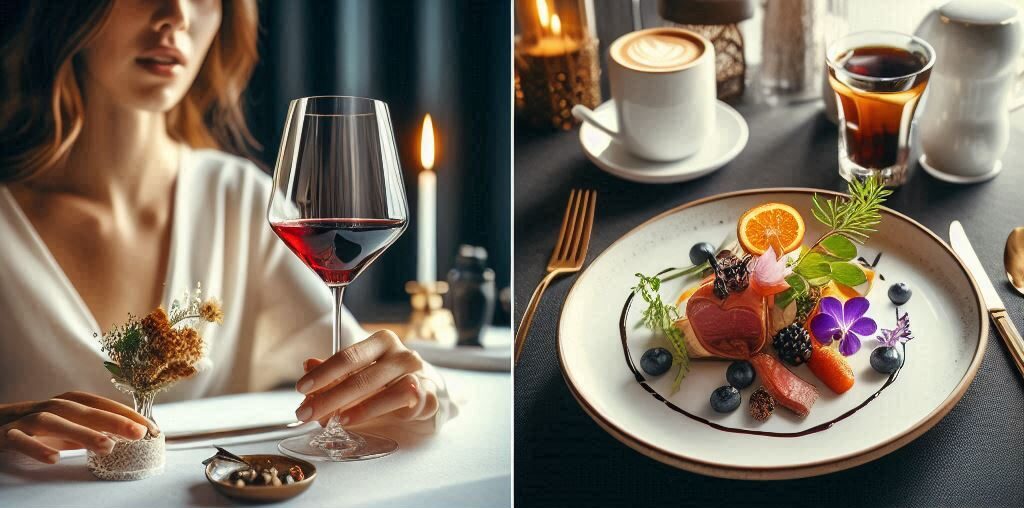
The world is buzzing with an appreciation for the local food and drink culture. A trend that’s rapidly transforming the global hospitality scene. Now, more than ever, hotels are not just places to sleep but destinations where guests can dive deep into regional cuisine and authentic culinary experiences. They’re becoming epicenters of culture, showcasing the local flavors that define their location.
Often criticized for its lack of creativity and disconnection from the cultural fabric of its location. Today, hotels are flipping the script, integrating culinary hotel designs that put local food and drink at the forefront. This transformation sees interior spaces, from lobbies to bars, reimagined as stages for the local food scene to shine.
Celebrating regional cuisine means more than just featuring it on the menu. It’s about creating spaces that tell a story, environments that weave the cultural tapestry of a place into the very fabric of the hotel. Design elements are carefully chosen to reflect the heritage and traditions of the region, from the materials and colors to the artwork and furnishings.
For instance, a hotel in the heart of Tuscany might feature open kitchens that spill the comforting aromas of traditional Italian cooking into the dining space, surrounded by terracotta tiles and reclaimed wood from local vineyards. This design immerses guests in the Tuscan way of life, offering a dining experience that’s both authentic and deeply personal.
Pioneering Authentic Dining Experiences
Hotels and restaurants are redefining dining experiences, moving away from generic options to offer authentic encounters that showcase local flavors. This involves innovative approaches such as chef-led excursions to nearby markets or immersive cooking sessions exploring the region’s culinary heritage.
Customers seek a harmonious blend of flavors, textures, and stories. Establishments are leading the charge, curating gastronomic adventures that go farther than traditional dining norms.
Creating opportunities for patrons to savor exceptional food while gaining insight into the cultural fabric of the region, has revolutionized the dining. This approach fosters a deeper connection between consumers and their food, enriching their experience in ways previously unimagined.
This evolution of dining experiences has transformed the industry, as it satisfies appetites and also nourishes a hunger for cultural exploration.
Craft Beverages on Center Stage
Craft beverages are stealing the spotlight in hotel bars and lounges, offering guests a delightful taste of the local drinking culture. Think microbrewery beers, small-batch spirits, heritage wines, and regional cocktails—all carefully curated to showcase the essence of the area.
Take, for instance, a charming hotel nestled in the heart of the Pacific Northwest, where the craft beer scene is woven into the local identity. Here, the bar becomes a hub of activity, boasting a rotating selection of taps sourced from nearby breweries.
These establishments go beyond mere consumption, offering tastings and workshops that delve into the intricate processes and rich histories behind each beverage. Guests embark on a journey of discovery, learning about the art of brewing, distilling, and winemaking. It’s an excellent experience that delights the palate and enriches the mind.
Creating a Full-Sensory Experience
What distinguishes these hotels is their capacity to curate a comprehensive sensory journey that extends far beyond mere dining. It’s about immersing oneself in a multi-dimensional experience – beholding the vivid hues of a dish, savoring the symphony of sizzling spices in a skillet, relishing the tactile sensation of handcrafted ceramics, and, naturally, indulging in the flavors that reflect the essence of the region. Yet, it’s not about the tangible elements – it’s also about the intangible aspects, like the narratives exchanged between patrons and culinary artisans, the genuine hospitality extended, and the feeling of being part of a larger gastronomic community.
These immersive encounters are further enriched through various happenings that seamlessly integrate local culture into the hotel environment – whether it’s hosting regional food festivals, organizing pop-up dinners featuring esteemed guest chefs, or facilitating farmers’ markets where guests can engage directly with the producers. It’s a celebration that transcends mere gastronomy; it’s a celebration of culture, camaraderie, and connectedness.
The Global Impact
This culinary hotel design has a ripple effect that extends beyond the confines of the hotel. By focusing on local food and drink culture, hotels contribute to the sustainability of food systems and support local economies. They offer a platform for small producers, farmers, winemakers, and brewers to showcase their products, creating a direct link between the consumer and the source.
This emphasis on localism helps preserve culinary traditions and recipes that might otherwise be lost, ensuring that they’re passed on to future generations. It also fosters a greater understanding and appreciation among travelers for the regions they visit, building bridges between cultures through the universal language of food.
The integration of local food and drink culture into hotel design is more than a trend; it’s a movement to authenticity, sustainability, and community. We can expect to see more hotels embracing and celebrating the unique flavors of their locales, offering guests a place to stay with the regional cuisine.
For travelers yearning for a connection with the places they visit, these hotels are beacons of cultural and culinary exploration, promising experiences that linger long after the last bite and the final sip.
















